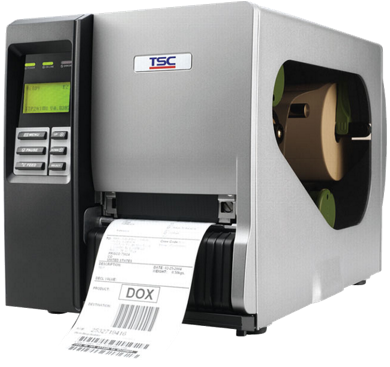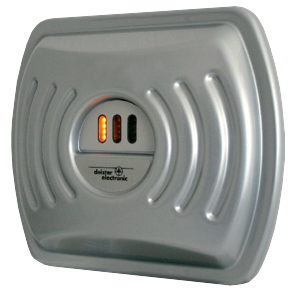Automatic identification and data collection in industry
To ensure efficient operation, synchronisation of individual operations and smooth replenishment of stockIn an industrial enterprise, most often in manufacturing, it is often necessary to use one of the methods of intelligent labelling of objects and resources. The branch of industry that deals with such marking is called identification. Obviously, an industrial environment will place different requirements on the methods and means of identification than, for example, an office, a supermarket or a ticket checker at a sporting event.
The basic requirements of the technology itself, which are unambiguity, error free and speed of marking and reading the mark, will of course not change. What is different for industrial use is that the required parameters on the equipment and technology are set differently on the scale of importance for the industrial sector. For example, the IP (ingress protection) index, which indicates how dust- and water-resistant a device is, gets a higher value. A more durable metal housing will be preferred, and conversely, smaller size, light weight or lowest price will not be the main considerations for the final selection.
 For any identification, including in industry, barcodes are most commonly used. They simply have so many advantages that they dominate as a method of marking. They are undoubtedly the cheapest method, they can carry sufficient information value for identification purposes, each printed barcodebarcode contains self-correcting elements so that the information can be read very reliably and the huge advantage over other identification methods is the worldwide standardisation.
For any identification, including in industry, barcodes are most commonly used. They simply have so many advantages that they dominate as a method of marking. They are undoubtedly the cheapest method, they can carry sufficient information value for identification purposes, each printed barcodebarcode contains self-correcting elements so that the information can be read very reliably and the huge advantage over other identification methods is the worldwide standardisation.
Of the barcode printers, special industrial printers form a large group. Their range of applications is wide, from medium-sized warehouses to logistics centres, distribution warehouses, manufacturing companies to the food, electrical and automotive industries. Industrial barcode printers differ from desktop (office) printers mainly in speed and print quality, robust all-metal construction resistant to shocks and impacts, the possibility of using larger diameter label rolls. The internal components are designed to guarantee reliable printing even in harsh production environments. Both thermal transfer and direct thermal printing options are typically available, print head resolution can range from 203 dpi to 600 dpi (24 dots/mm), print widths up to 216 mm. In addition to the usual printer connectivity options, an optional wi-fi module for wireless communication is available. Some industrial printers allow for the addition of an RFID module for writing and printing permanentThe more commonly used SmartLabel labels or stickers with integrated RFID chip, antenna and rewritable passive tag. Lesser used accessories include a verifier of the readability of printed barcodes or 2D codes. Current printers allow printing of a variety of materials - thermal paper, thermal transfer paper, vinyl mylar, metallized paper, non-woven fabric, fine woven fabric, infrared scannable paper, heat-sensitive plastics, cardboard, continuous strip, reel, tags, tickets, paper and thermal paper stickers, die-cut/perforated labels and cartons.
However, in an industrial environment there are reasons why barcodes are not always the most appropriate identification method. The first such reason is the low durability of the barcode. Kiln firing, painting, and chemical baths are deadly to a barcode label. Even today, it is still not uncommon to use perforated chips made of durable plastic or sheet metal for similar production stages. However, a perforated token can only carry a relatively simple identifier (e.g., the serial number of the piece being processed during a shift), and unless reuse is assured, it would also be a relatively expensive method.
 In some processes, DPM, Direct Part Marking, is used for identification. This technology involves stamping small dots directly into the material. The advantage of the technology is the possibility of marking a material such as rubber, metal or plastic. The carrier is therefore the production material itself, which is directly marked by the tip of the marking head, by laser, chemically or by a special ink jet printer.
In some processes, DPM, Direct Part Marking, is used for identification. This technology involves stamping small dots directly into the material. The advantage of the technology is the possibility of marking a material such as rubber, metal or plastic. The carrier is therefore the production material itself, which is directly marked by the tip of the marking head, by laser, chemically or by a special ink jet printer.
The second reason for seeking a replacement for the barcode is the need to encode more information in the same amount of space. If the problem is not in the environment that damages the barcode label, it is best to use 2D (two-dimensional) code technology. Two-dimensional codes such as Aztec, Datamatrix, PDF417 or QR-code are actually nothing more than enhanced barcodes. They're based on the same principles, they're just as cheap, and they're just as easy to use - they just hold a lot more information. To give you an idea of the amount of data that can be encoded, a 2D code measuring 3mm x 3mm can hold 50 characters of text. Similar to 1D barcodes, 2D codes are most often applied to a self-adhesive label.
The last, increasingly used labelling method is RFID technology. At first glance, it differs from barcodes mainly by using lower frequencies of the electromagnetic spectrum than visible light. As a result, an RFID reader can see the identification tag through a wooden wall or plastic wrapping as if there were no obstacle in the way at all. This feature of RFID is literally fascinating to many people, and indeed it is often used in practice. You can place the RFID tag inside a pallet of products or inside the product itself, avoiding the possibility of mailingfrom abrasion or contamination, as is often the case with barcodes.
But simply shifting the operating frequency from the visible light band to the invisible radiation band is not the most important difference between barcodes and RFID technology. The biggest difference is that a printed barcode simply reflects light, whereas an RFID chip actually responds to irradiation by a reader. Each RFID tag, unlike a barcode, is a miniature and very limited, but still - a full-fledged computer. It has its own memory, and it has its own set of instructions that the reader must operate in order to retrieve information from or write information to the chip. It is this fact that is essential for such RFID features as the simultaneous reading of hundreds of identifiers foror writing specific information to a particular tag without knowing exactly where the target tag is.
Radio Frequency Identification (RFID), this modern method of identification, combines both of the above reasons for the need to replace the barcode. RFID tags are durable enough to survive painting or chemical baths and often have several kB of memory for reading and, an added bonus, for writing data. This more sophisticated technology provides the luxury of speed, small
error rates and the ability to write and read large amounts of information. It is, however, subject to deployment by dedicated professionals and is therefore more capital intensive.





